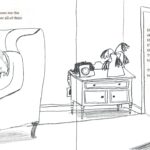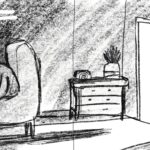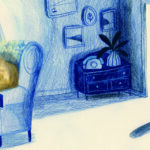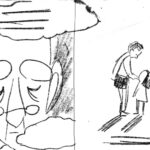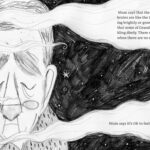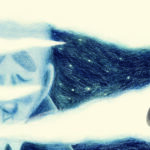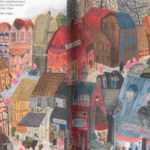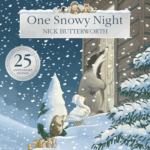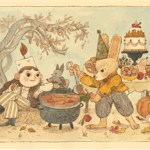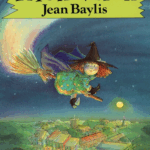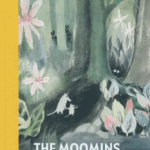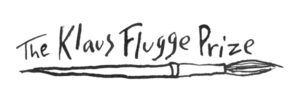
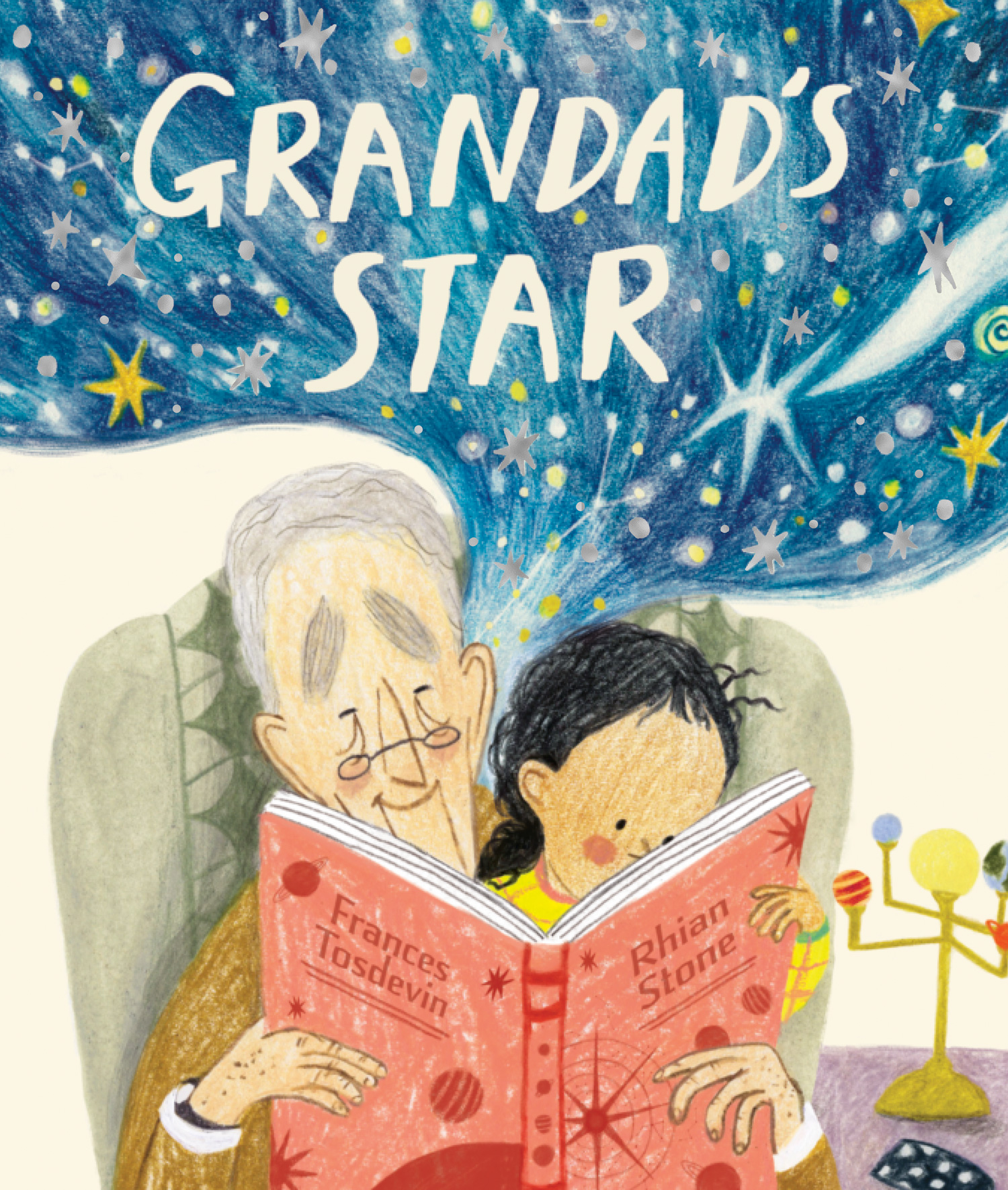
Grandad’s Star, illustrated by Rhian Stone, written by Frances Tosdevin
Grandad’s Star is one of three books on the shortlist for the 2025 Klaus Flugge Prize. A deeply felt and beautifully composed book, it captures the quiet power of grief, memory, and connection with great sensitivity. So much of that is held in Rhian Stone’s gentle, expressive illustrations.
Former Klaus Flugge Prize judge, Senior Lecturer in Education: Primary English and Children's Literature, Oxford Brookes University, Mat Tobin interviewed Rhian about her book.
Rhian, can you tell us about some of your illustrations in Grandad’s Star. The page where the text reads "Then he forgets my name" is especially affecting. How did you approach designing that moment visually? Were there many versions of that spread?
There actually weren’t very many. During the thumbnailing stage, the idea appeared almost straight away. When I read the text, this part of the story struck me as one of the saddest moments. Francis has a wonderful way with words, and this was a short but powerful sentence that really said everything. So I knew I wanted that page to have an impact in order to let that moment really sink in. It’s not just the grandad’s isolation but the little girl’s as well. Here they are so close to one another but so far away. I had quite a few conversations with Ness and Libby on how to get this image and the text surrounding it right. I’m glad that spread seems to be resonating with people, as I know it’s a heartbreaking situation for so many.
Did you work closely with Frances Tosdevin while illustrating Grandad’s Star, or did you respond independently to the text? Can you tell us about your collaboration with editor Libby Hamilton and designer Ness Wood too? How did their feedback shape the final artwork? Were there particular moments where their insight helped something fall into place?
Actually I didn’t correspond directly with Frances until after the book was complete (she’s absolutely lovely, by the way). Working with Libby and Ness was great! They were kind and respectful as well as encouraging, and they made the whole project (because it was my first book) less daunting. Their advice was invaluable. We had lots of conversations about how the book should look, and tweaks were made here and there, but overall I had a lot of freedom. One particular spread in the book – the grandad’s head in the clouds – was initially a single page. Libby had the great idea to really hold that space and focus in on the grandad’s isolation by stretching it into a double-page spread. And instantly, it worked! As we moved into colour, Ness knew how to create contrast, how to let the text breathe or let a particular colour draw the eye. The book wouldn’t be the same without them, and I’m very grateful for their guidance.
You’re a self-taught illustrator, which is remarkable in itself. Could you tell us a bit about your journey into illustration? Were there particular artists, picturebooks, or visual storytellers who guided or inspired you as you found your voice?
That’s very kind of you. It’s probably a very common story: when I was a little girl, I loved to draw and write. I wrote and illustrated a story about foxes (I wish I could remember the plot – if there was one), and, with the help of some string, glue and, most likely, a parent, it became a little handmade book. But I didn’t consider illustration as a career for a long time, not until I was in my late twenties and wondering what to do with my life. So I began revisiting the activities I’d enjoyed as a child. Unfortunately, I knew that running about in the garden pretending to be a world-class show jumper was not what most people would consider a usable skill, but drawing was. After exploring a few different avenues, I twigged that actually, illustrating books was more my thing. In 2021 I entered the Plum Awards, an online competition my agency was running, and they asked to represent me! I, of course, said yes, and the rest, as they say, is history.
There are so many artists and storytellers, far too many to name, but here are a few: Laura Carlin, Tove Jansson, Rebecca Green and Beatrice Alemagna. And books from my childhood too: TitchyWitch by Jean Baylis (a book that, sadly, people seem to have forgotten about), Where The Wild Things Are, One Snowy Night, The Grumpalump, Old Bear Stories, Funny Bones – I could go on.
Is there a particular spread that felt especially satisfying to resolve — whether because it was challenging to get right, or because something clicked along the way? It would be great to know which part of the book felt like a breakthrough moment for you.
Again, not to be repetitive, but it was the “Then he forgets my name” spread that triggered a bit of a breakthrough. Whilst, early on, I’d had a clear idea for the composition, when it came to final artwork, I wasn’t sure how to approach it. I’d been using pencil throughout, but I’d also been relying pretty heavily on gouache and collage. I remember struggling with feeling “tight” while making the book; the collage was fiddly, and, as a result, I wasn’t enjoying using it as much as I had previously in my work.
After struggling with this spread for a while, I vaguely remember picking up a single blue pencil and starting to scribble. I continued, drawing and drawing until suddenly most of the page was complete. It had felt easy, and recognising this was a real turning point for me. I realised until that point, most of the work I’d been creating didn’t feel easy for me (sometimes it still doesn’t), but I knew I needed to keep exploring pencil as a medium, returning to “drawing” rather than painting or collage, which most of my work until Grandad’s Star had been.
In the end, for this particular spread, I added just a small amount of collage (the papers at the granddad’s feet) and only used paint for the little girl’s jumper. Since creating Grandad’s Star, I’ve focused more and more on using dry media. Now I’m mostly working with pencils, pan pastels and oil pastels. I’m immensely grateful to have worked on this book for many reasons, and this is definitely one of them; without it, I doubt I would have discovered that, actually, working in dry media is more natural for me. I think I’d convinced myself that a “true artist” (whatever that is) HAD to be able to paint really well. But I don’t think that’s true; at least, it isn’t for me haha.
You seem drawn to themes of folklore and atmosphere in your other work. Are there any stories, creatures, or traditions you'd love to explore through picturebooks in the future? What excites you about bringing folklore into this format?
I wish I knew how to answer this in a really academic and intriguing way, but unfortunately, I just think it’s cool! Maybe it’s the magic and mystery of folktales, their darkness and spookiness, or maybe it’s the adventurous settings full of dark forests and winding rivers; I don't know. I think there are many books out there, old and new, that are playing on these ideas. Whilst I don’t have a specific story in mind at the moment (maybe it will include a talking frog, a long-lost ghost, or a tempestuous Bird-Queen) I think these ideas will probably hover quietly in the back of my mind, like an old, dusty book waiting to be read until the right project comes along.
Grandad’s Star is published by Rocket Bird Books, 978-1915395276, £7.99 pbk.
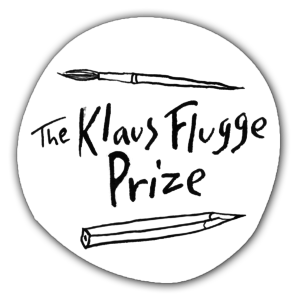
The Klaus Flugge Prize is funded personally by Klaus Flugge and run independently of Andersen Press.
Website maintenance & Copyright © 2024 Andersen Press. All Rights Reserved. Privacy & Cookie Policy.
